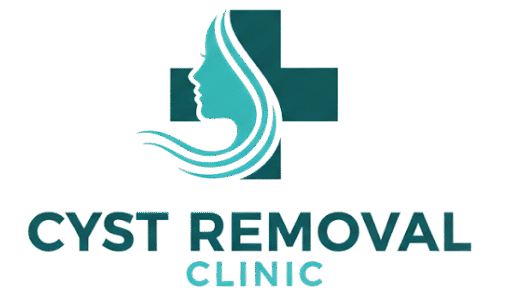It’s completely normal to wonder whether cyst removal will leave a scar — especially when the cyst is on a visible area such as the face, neck, or scalp.
The short answer is yes, a small scar is always possible, because every surgical incision leaves a mark as the skin heals. However, when performed by an experienced doctor using precise technique and proper aftercare, the scar is typically minimal, flat, and fades over time.
At Cyst Removal Clinic London, scar minimisation is part of every procedure — from the way we plan the incision to how the wound is closed and cared for afterwards.
Why cyst removal leaves a small mark
When a cyst is removed, a small incision is made through the skin to access and extract the cyst capsule. The size of this incision depends on the cyst’s diameter, depth, and type of removal technique used.
After the procedure, the skin repairs itself through a natural process of collagen production and remodelling. This creates new tissue that forms a faint line or spot where the incision was made.
Over several weeks and months, this new tissue becomes smoother, lighter, and less visible.
How large will the scar be?
The appearance of a scar varies depending on:
- Cyst size and depth – larger or deeper cysts may need a longer incision.
- Technique used – methods like minimal excision or punch excision require smaller openings and therefore smaller scars.
- Location on the body – areas with thinner skin (such as the face) generally heal more cleanly than areas under tension (like the back or shoulder).
- Individual healing – skin type, age, and genetics all influence scar appearance.
For most patients, the final result is a small, pale line or tiny dot, often difficult to detect once fully healed.
Techniques that reduce scarring
At our clinic, doctors use advanced minor-surgery techniques specifically chosen to reduce visible marks:
1. Minimal excision technique
A very small 2–3mm incision allows the cyst to be removed through a small opening. Often requires no stitches.
2. Punch excision
A circular micro-tool removes the cyst neatly, leaving a pinpoint-sized wound that heals flat and smooth.
3. Fine suturing and skin alignment
When stitches are required, fine non-absorbable or dissolvable sutures are placed with cosmetic precision to keep the wound edges perfectly aligned.
4. Natural skin-line placement
Incisions are planned to follow natural creases or hairlines where possible, so healed scars blend into normal contours.
5. Gentle tissue handling
Minimising trauma during removal helps the wound close more cleanly and prevents excess inflammation that can affect scar texture.
What a normal healing scar looks like
The healing process usually follows this timeline:
- Days 1–5: Wound closed or sealed; slight redness or mild swelling.
- Week 2: Stitches (if used) are removed; scar may appear pink or firm.
- Weeks 3–6: Colour begins to fade; surface flattens.
- Months 2–6: Scar softens and blends with surrounding skin tone.
It’s common for new scars to appear slightly pink or darker than your skin at first. This gradually lightens and smooths over time.
Aftercare tips for the best cosmetic result
How you care for the wound after surgery makes a major difference to final appearance.
1. Keep it clean and protected
Follow your doctor’s aftercare instructions carefully — usually keeping the dressing dry for the first 24–48 hours, then gently cleaning with mild soap and water.
2. Avoid stretching the area
Excess tension can widen scars, especially on the back or chest. Limit strenuous movement until healed.
3. Moisturise once the wound closes
Use a fragrance-free moisturiser or silicone-based scar gel once advised by your doctor. This keeps the new skin supple and reduces tightness.
4. Protect from sun exposure
UV light can darken fresh scars. Apply SPF 30+ daily or keep the area covered for at least three months.
5. Avoid picking scabs or crusts
Let the wound heal naturally to prevent irritation or pigmentation marks.
6. Follow your follow-up schedule
Your doctor will check healing progress and remove stitches at the appropriate time — usually around 7–10 days.
When to expect full healing
Most cyst removal sites heal completely within 2–3 weeks, though the scar continues to mature for several months.
By 3–6 months, the mark is typically soft, pale, and barely visible. In some cases, it may take up to a year for the scar to reach its final appearance.
Patients with darker skin may experience temporary pigmentation changes (either darker or lighter patches) which gradually normalise over time.
Managing more visible scars
If a scar becomes raised, red, or thickened (known as hypertrophic or keloid scarring), there are effective treatments available, such as:
- Silicone gel or silicone sheets
- Mild steroid creams
- Laser therapy for redness or texture
- Microneedling or resurfacing for older scars
These are rarely needed, but your doctor can discuss options if the scar remains noticeable several months after healing.

